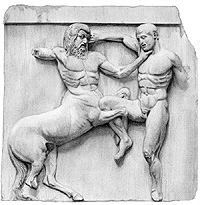The following are this researcher’s impressions of the Journal and letters of William Bradford and his associates concerning the planting of the Plymouth and other nearby English colonies, beginning with a letter from Edwin Sandys dated 12 November 1617 [37.] and Bradford’s correspondence from 9 April 1623 [224.] which concerns problems with resupply shipping.
Impressions
-Although all academic sources sight the unfree members of the Mayflower expedition as “indentured servants” Bradford & company never refer to these folk as indentured but merely as servants, who were scheduled to be fed from the communal larder depending on their age, with child servants eating half rations. This places servants on the level of family pets, rather than as the tools they were regarded as in Virginia, where servants were fed scraps from their owner’s private larder, usually only corn and water. New England servants had a right to meat.
-Each plantation was essentially adopted by an Indian interpreter who used his position as go-between to enhance his status among his own people and to work alliances against rival tribes.
-English sailors and merchants were in the habit of living with Indian women based on long-standing trade relationships prior to Bradford’s company of Saints and Strangers landing in 1621.
-Indians suspected that the English were in fact the agents of the sicknesses that had been reducing their numbers and vacillated between asking English for help in this matter—which took the form of conversions—and using their alliances with the English as a threat to unleash plague on their fellows.
-As with the account of Mather from 1676, the English were first to steal from the Indians, even after these same Indians had leant them women as temporary wives and given them food.
-The first declaration of war intentions between Indians and New Englanders was made with a bundle of arrows bound by a snakeskin, presented to the thieving English. The English responded by wrapping musket balls in the snakeskin and returning it.
-Shipwrecked crews were typically robbed and sometimes taken captive, but not killed. It seems that the Indians lost respect for English who lost the command of their amazing means of ocean transport.
-Overall, based on Indian behavior, there was a deep body of experience in dealing with English, including possession of English language skills and knowledge that these men had access to large stores of goods and that to kill one after he was robbed was a needless waste, as they were not warriors and might return with goods to barter.
-The beaver fur trade was already well established before 1600.
-New England and Virginia had regular news of one another through the trading vessels that conducted trade and brought servants and planters.
The Lies That Bind Us
The Foundational Falsehoods of the American Dream











